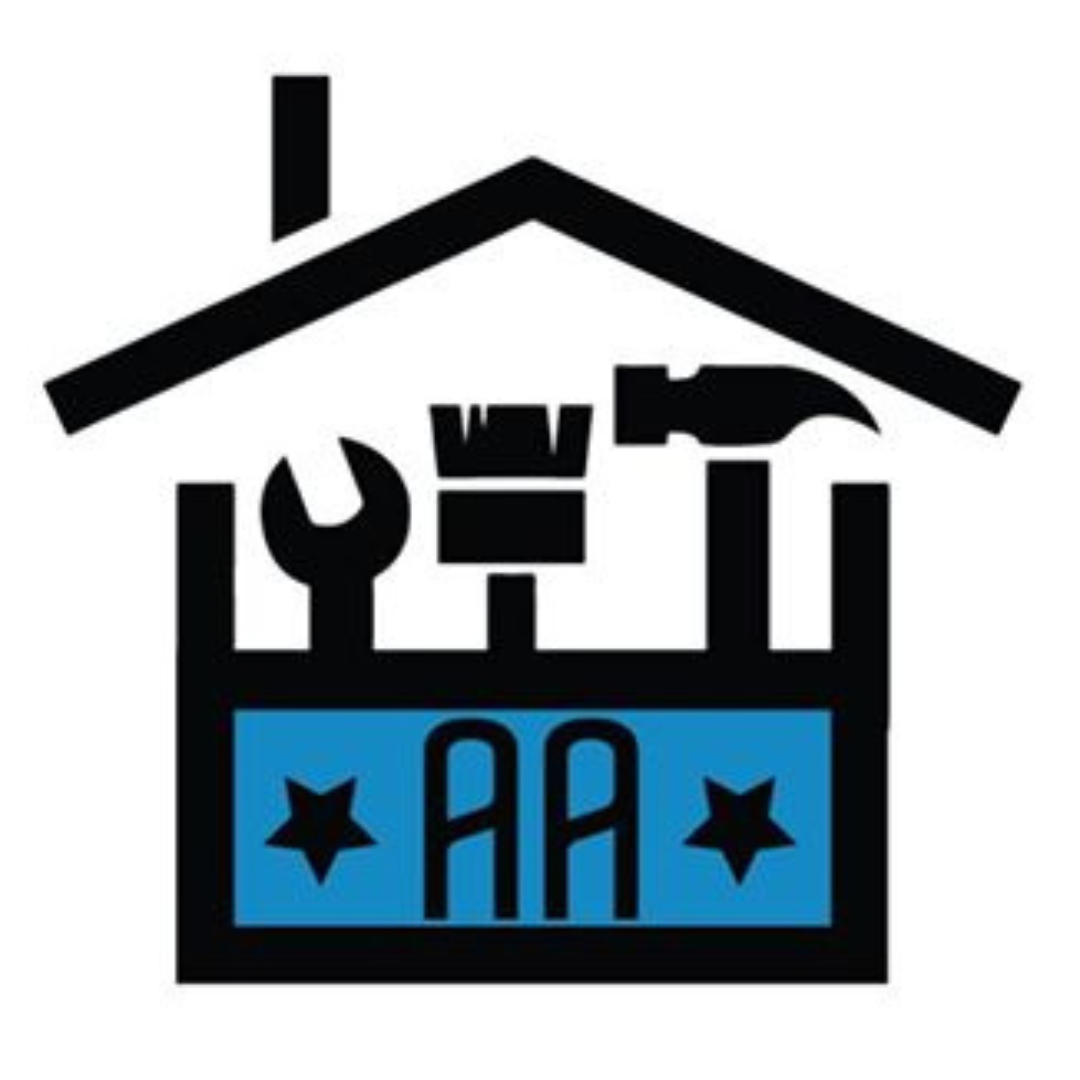Achieving a smooth, flawless finish on interior house painting is no easy task. It requires skill, patience, and a deep understanding of various techniques that professional painters use. Whether you’re a DIY enthusiast or someone looking to hire professional interior house painters in Jacksonville FL, this guide will walk you through the best techniques for a smooth and impeccable finish.
At Affordable Actions, we specialize in providing top-notch painting services in Jacksonville, FL, ensuring your home looks beautiful with a smooth finish. Our team of expert interior house painters uses only the best practices to deliver exceptional results that last.
Proper Surface Preparation: The Foundation for a Smooth Finish
Before applying any paint, surface preparation is the most crucial step in achieving a smooth finish. Properly prepared surfaces ensure that the paint adheres well, and any imperfections are minimized.
- Cleaning the Surface: Walls can accumulate dirt, grease, and other residues that may hinder paint adhesion. It’s essential to clean the surface thoroughly before starting any painting project. Using mild soap and water with a sponge or cloth, wipe down the walls to remove dust, oils, and stains. For stubborn marks, a stronger solution like a degreaser can be used.
- Sanding the Surface: Sanding the walls is another vital step. This process removes any existing paint imperfections, bumps, or rough patches that may prevent the new coat of paint from going on smoothly. Use fine-grit sandpaper (typically between 120 and 220-grit) for a smooth, even surface. Sanding also helps to smooth out dried spackling or patching compounds used to fill holes or cracks.
- Patching Holes and Cracks: Before sanding, it’s important to fill any holes or cracks in the walls. A high-quality spackling compound or joint compound works wonders for this. Apply a thin layer over the imperfections, then use a drywall knife or putty knife to smooth it out. Once dried, sand the patched areas until they are level with the rest of the surface.
Priming the Surface
Priming is another critical step to ensure a smooth, long-lasting finish. A good primer helps the paint adhere better, prevents staining, and improves the overall color richness.
- Choosing the Right Primer: Selecting the right primer is essential for different surfaces. For drywall, a basic latex primer should suffice. However, for surfaces prone to stains, such as new drywall or areas with water damage, a stain-blocking primer is recommended. Always choose a high-quality primer to ensure the best results.
- Applying the Primer: Priming should be done in thin, even coats. It is vital to allow the first coat to dry completely before applying a second coat. Using a high-density foam roller or a paintbrush, apply the primer evenly across the wall. Pay extra attention to areas that have been patched or repaired, as they may require additional coats of primer for optimal coverage.
Selecting the Right Paint
Choosing the right paint for your interior walls is just as important as preparing the surface. The type of paint you choose can make a huge difference in achieving a smooth, professional-looking finish.
- Types of Paint: There are two primary types of interior house paint: latex and oil-based. Latex paints are water-based and dry quickly, making them ideal for most interior surfaces. They are also easier to clean up and less odorous. Oil-based paints, on the other hand, take longer to dry but provide a durable, glossy finish that’s perfect for areas that need frequent cleaning, such as trim or doors.
- Choosing the Right Finish: Paint finishes play a significant role in the final appearance of your walls. The most common finishes are:
- Flat: Best for hiding imperfections, but difficult to clean.
- Eggshell: A soft sheen that’s more durable than flat paint but still hides imperfections.
- Satin: Offers a subtle sheen and is easier to clean, ideal for high-traffic areas.
- Semi-gloss: Has a shiny finish and is perfect for trim and doors.
- High-gloss: The shiniest finish, great for accents but highlights imperfections.
For most interior walls, eggshell or satin finishes work best. These finishes provide a balance between aesthetics and durability.
Using the Right Tools for a Smooth Finish
The quality of the tools used in painting can significantly affect the final result. Professional interior house painters in Jacksonville, FL, use high-quality tools to ensure a smooth, flawless finish.
- Paint Brushes: For cutting in around trim, corners, and edges, a high-quality angled paintbrush is essential. The bristles should be firm enough to maintain a sharp line but soft enough to smoothly apply the paint. A 2.5-inch angled sash brush is a standard tool for most interior painting jobs.
- Paint Rollers: For larger wall areas, a roller is the best tool. When choosing a roller, consider the type of texture on the walls. Smooth walls require a roller with a shorter nap (3/8-inch or 1/4-inch), while textured walls require a longer nap (1/2-inch or more). Using the right roller ensures that paint is applied evenly and smoothly.
- Paint Trays and Liner: A paint tray helps to distribute paint evenly on the roller. Using a tray liner makes cleaning up easier and ensures that the roller picks up the right amount of paint.
Mastering the Painting Technique
How you apply the paint is just as important as the tools and materials used. Using the right technique ensures even coverage and prevents brush marks, roller streaks, and other imperfections.
- Cutting in Around the Edges: Before using a roller, it’s crucial to “cut in” around the edges of the walls, where the roller won’t reach. This involves painting along the trim, corners, and ceiling with a brush. Start by loading the brush with a small amount of paint, and carefully work along the edges, keeping a steady hand.
- Using a W-Motion for Rolling: When using a roller, always apply paint in a W-motion rather than simply rolling up and down. The W-motion ensures that the paint is distributed evenly and reduces the risk of roller lines or streaks. After making a W shape, go back over it with horizontal strokes to smooth out the texture.
- Avoiding Overloading the Roller or Brush: Overloading your brush or roller with paint can lead to drips, streaks, and uneven coverage. Always remove excess paint by tapping the brush or roller against the side of the can or tray before applying it to the wall.
- Working in Small Sections: It’s important to work in small sections when painting. Start from one corner and work your way across the wall, maintaining a “wet edge” to avoid visible lines where the paint overlaps. A wet edge allows the paint to blend seamlessly as you continue working.
Drying Time and Recoating
After applying the first coat of paint, it’s essential to allow it to dry completely before applying a second coat. Drying times can vary depending on the type of paint, humidity, and temperature, but generally, latex paints take about 1-2 hours to dry to the touch and 4-6 hours for full drying.
- Checking for Imperfections: After the first coat has dried, inspect the wall carefully for imperfections. If you notice any uneven areas, patch them up with a small amount of paint and smooth them out with a brush. Once you’re satisfied with the coverage, apply a second coat.
- Sanding Between Coats: For an ultra-smooth finish, sanding between coats of paint is a technique that many professional interior house painters use. After the first coat has dried, lightly sand the surface with fine-grit sandpaper (around 220-grit). This removes any imperfections and creates a smooth surface for the next layer of paint.
Final Touches
Once the second coat is applied and fully dried, it’s time to add the finishing touches.
- Touching Up Edges: Check the edges where the walls meet the trim or ceiling. If necessary, use a small paintbrush to carefully touch up any spots where the roller may have missed or left uneven edges.
- Cleaning the Area: After the painting is complete, it’s essential to clean the tools and any spilled paint. Use soap and water for latex paints or paint thinner for oil-based paints. Cleaning your tools ensures that they stay in good condition for future use.
Why Choose Affordable Actions?
At Affordable Actions, we take pride in being the leading interior house painters in Jacksonville, FL. We use only the best techniques and materials to ensure that your home looks stunning with a smooth finish. Our team of professional painters is dedicated to delivering high-quality results that exceed your expectations. Whether you’re looking for a fresh coat of paint or a complete interior makeover, we have the expertise to handle it all.
- Expertise and Experience: With years of experience in the industry, our team understands the nuances of achieving a smooth, flawless finish. We stay up-to-date with the latest trends and techniques to provide you with the best service.
- Affordable Pricing: As our name suggests, we believe in providing affordable yet high-quality painting services. We offer competitive pricing without compromising on the quality of our work.
- Attention to Detail: Our attention to detail is what sets us apart. We take the time to prepare your surfaces correctly, ensuring that every corner, edge, and surface gets the attention it deserves.
- Customer Satisfaction: Our primary goal is customer satisfaction. We work closely with you to ensure that your vision is brought to life, and we won’t consider the job complete until you are 100% satisfied with the result.
If you’re looking for interior house painters in Jacksonville, FL, who can deliver a smooth, flawless finish, look no further than Affordable Actions. Get in touch with us today for a consultation, and let’s transform your home into a beautiful masterpiece.

